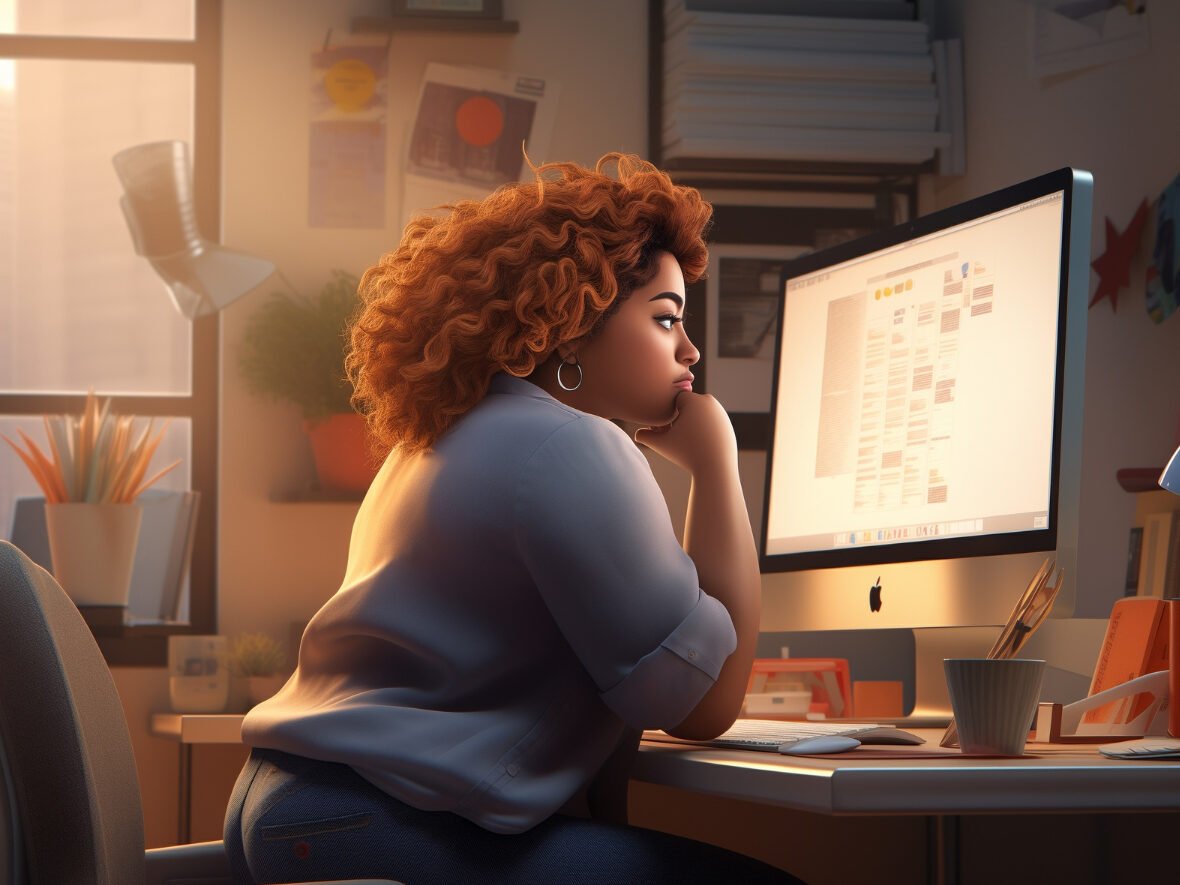
Are you a web designer looking to unlock the secret to success? Look no further than the twin powers of creativity and user experience. As a web designer, your ability to think outside the box and create visually stunning designs is a key aspect of your craft. But it doesn’t stop there. To truly succeed in the field, you must also master the art of user experience.

User experience, or UX, is the foundation upon which a successful website is built. It encompasses everything from how users navigate and interact with a site to the overall satisfaction they derive from their visit. By understanding the needs and preferences of your target audience, you can create a user experience that not only looks great but also functions seamlessly.
In this article, we will delve into the secrets of success as a web designer. We will explore the importance of unleashing your creativity to create visually stunning designs, as well as the crucial role that user experience plays in ensuring your designs are effective. So, if you’re ready to take your web design skills to new heights, let’s get started!

The connection between creativity and user experience
Creativity and user experience are interconnected and play a significant role in the success of a web designer. Creativity allows you to think outside the box, come up with unique design concepts, and create visually stunning websites. It is the fuel that drives innovation and sets your designs apart from the crowd.
User experience, on the other hand, focuses on how users interact with and navigate through a website. It involves understanding the needs and preferences of your target audience and designing a user interface that is intuitive, seamless, and enjoyable to use. By combining creativity with user experience, you can create websites that not only look great but also provide a positive and memorable experience for users.
The impact of creativity on web design
Creativity is at the core of web design. It is what allows you to transform a blank canvas into a visually appealing website that captures the attention of users. Creative web design involves choosing the right color schemes, typography, layout, and imagery to create a cohesive and aesthetically pleasing design.
One of the key benefits of creativity in web design is the ability to differentiate yourself from other designers and create a unique brand identity for your clients. By thinking outside the box and experimenting with different design elements, you can create websites that stand out and leave a lasting impression on users.
Moreover, creativity is not limited to the visual aspects of web design. It also extends to the user experience, as innovative and creative solutions can enhance the usability and functionality of a website. By approaching design challenges with a creative mindset, you can find unique solutions that improve the overall user experience and make your websites more effective.
Creativity also plays a role in the iterative process of web design. As you receive feedback from clients and users, creativity allows you to adapt and improve your designs based on their input. It enables you to think critically, problem-solve, and come up with innovative solutions that address any issues or concerns raised.
In conclusion, creativity is the driving force behind successful web design. It allows you to create visually stunning websites, differentiate yourself from other designers, and find innovative solutions to design challenges.
The importance of user experience in web design
User experience (UX) is a crucial aspect of web design that cannot be overlooked. It encompasses everything from how users navigate and interact with a website to the overall satisfaction they derive from their visit. A positive user experience is essential for the success of a website, as it directly impacts user engagement, conversions, and brand perception.
Techniques to unleash creativity in web design
Creativity is a skill that can be nurtured and developed. Here are some techniques to help unleash your creativity in web design:
- Seek inspiration: Look for inspiration from various sources such as design blogs, social media, art galleries, and nature. Expose yourself to different design styles, colors, and patterns to expand your creative horizons.
- Collaborate: Collaborate with other designers, developers, and clients to gain fresh perspectives and ideas. Brainstorming sessions and feedback loops can spark creativity and lead to innovative solutions.
- Experiment: Don’t be afraid to experiment with different design elements, layouts, and techniques. Step out of your comfort zone and push the boundaries of traditional design to create unique and captivating websites.
- Sketch and doodle: Use pen and paper to sketch out your ideas and doodle freely. This allows you to visualize your concepts, explore different design options, and refine your ideas before diving into the digital realm.
- Break the rules: While there are design principles and best practices to follow, don’t be afraid to break the rules occasionally. Sometimes, unconventional design choices can lead to extraordinary results and set your work apart from the rest.
By incorporating these techniques into your design process, you can unleash your creativity and take your web design skills to new heights.
Strategies to master user experience in web design
Mastering user experience is crucial for creating effective websites that keep users engaged and satisfied. Here are some strategies to help you master user experience in web design:
- Research your target audience: Understand the needs, preferences, and behaviors of your target audience. Conduct user research, surveys, and interviews to gather insights that inform your design decisions.
- Create user personas: Develop user personas that represent your target audience. These personas help you empathize with your users and design websites that cater to their specific needs and goals.
- Simplify navigation: Design intuitive and easy-to-use navigation menus that allow users to find the information they need quickly. Use clear labels, logical hierarchies, and consistent placement of navigation elements for a seamless browsing experience.
- Optimize page loading speed: Slow-loading websites frustrate users and negatively impact user experience. Optimize your website’s performance by minimizing file sizes, leveraging caching techniques, and using content delivery networks (CDNs).
- Prioritize mobile responsiveness: With the increasing use of mobile devices, it is essential to design websites that are mobile-responsive. Ensure that your designs adapt to different screen sizes and provide a seamless experience across devices.
- Use visual hierarchy: Guide users’ attention by using visual hierarchy in your designs. Use size, color, contrast, and typography to highlight important elements and create a clear flow of information.
By implementing these strategies, you can create websites that deliver a seamless and enjoyable user experience, ultimately leading to higher user engagement and conversions.
Tools and resources for enhancing creativity and user experience in web design
In the ever-evolving field of web design, there are numerous tools and resources available to enhance your creativity and master user experience. Here are a few notable ones:
- Design software: Utilize design software such as Adobe Creative Cloud, Sketch, or Figma to bring your creative visions to life. These tools provide a range of features and functionalities that streamline the design process.
- Prototyping tools: Take advantage of prototyping tools like InVision or Axure RP to create interactive prototypes that allow you to test and refine your designs before development.
- User testing platforms: Use user testing platforms like UserTesting or Maze to gather feedback and insights from real users. These platforms provide valuable data to inform your design decisions and improve the user experience.
- Online design communities: Join online design communities like Dribbble or Behance to connect with other designers, showcase your work, and gain inspiration from the work of others.
- UX design frameworks: Explore UX design frameworks like Design Thinking or the Double Diamond model to guide your design process and ensure a user-centered approach.
By leveraging these tools and resources, you can enhance your creativity, streamline your design process, and create websites that prioritize user experience.
Case studies: Successful web designs that prioritize creativity and user experience
To further illustrate the importance of creativity and user experience in web design, let’s take a look at a few case studies of successful websites:
- Apple: Apple’s website is a prime example of how creativity and user experience can work together to create a seamless and visually stunning website. The use of clean lines, bold imagery, and intuitive navigation creates a cohesive and immersive user experience.
- Airbnb: Airbnb’s website is designed with a strong focus on user experience. The intuitive search functionality, personalized recommendations, and user-generated content create a sense of trust and engagement, leading to a positive user experience.
- Spotify: Spotify’s website employs a creative and visually appealing design that aligns with its brand identity. The use of bold colors, custom illustrations, and smooth animations creates an enjoyable and immersive user experience.
These case studies highlight how successful websites prioritize both creativity and user experience, resulting in engaging and effective designs.
The future of web design: Trends and innovations in creativity and user experience
As technology advances and user expectations evolve, web design continues to evolve alongside it. Here are some emerging trends and innovations in creativity and user experience that are shaping the future of web design:
- Microinteractions: Microinteractions are small, subtle animations or design elements that provide feedback and enhance the overall user experience. From button hover effects to loading animations, microinteractions add a touch of delight and interactivity to websites.
- Voice user interface (VUI): With the rise of virtual assistants and smart speakers, voice user interfaces are becoming increasingly important. Designing for VUI involves considering spoken language, context, and natural language processing to create intuitive and conversational user experiences.
- Dark mode: Dark mode is gaining popularity due to its aesthetic appeal and potential energy savings on devices with OLED screens. Designing for dark mode involves considering color contrast, readability, and ensuring a cohesive visual experience across light and dark themes.
- Augmented reality (AR): AR is blurring the lines between the physical and digital worlds. Web designers can leverage AR to create immersive experiences, such as virtual try-on features for e-commerce websites or interactive 3D models for product visualization.
- Responsive typography: Responsive typography involves designing typography that adapts to different screen sizes and resolutions. By using flexible fonts, fluid layouts, and variable fonts, web designers can ensure optimal readability and legibility across devices.
These trends and innovations highlight the importance of staying up-to-date with the latest developments in creativity and user experience. By embracing these advancements, web designers can create cutting-edge designs that meet the evolving needs and expectations of users.
Let's embark on this creative journey together
and design a brand that truly represents who you are and what you aspire to be!
In conclusion, the secret to success as a web designer lies in the twin powers of creativity and user experience. Creativity allows you to think outside the box, create visually stunning designs, and differentiate yourself from other designers. User experience, on the other hand, ensures that your designs are effective, engaging, and enjoyable for users.
By unleashing your creativity and mastering user experience, you can create websites that not only look great but also provide a seamless and memorable experience for users. Remember to seek inspiration, experiment with different design elements, prioritize user research, and leverage the tools and resources available to enhance your skills.
As technology continues to advance and user expectations evolve, it is essential to stay updated with the latest trends and innovations in creativity and user experience. By embracing these advancements, you can future-proof your designs and ensure continued success as a web designer.
So, if you’re ready to unlock the secret to success in web design, embrace your creativity, and prioritize user experience. With these powerful tools in your arsenal, you’ll be well on your way to achieving greatness in the world of web design.
Contact Us for more info: aditinischal.adi@gmail.com


